The Effects of Speed on the Running Performance of a Small Two-Wheeled Lunar Rover
Abstract
1. Introduction
2. Materials and Methods
2.1. The Creation of a Small Two-Wheeled Rover
2.2. Running Test Field
2.3. Density Test
2.4. Running Test
2.5. Test for Measuring Reaction Force
3. Results
3.1. The Results of the Density Test
3.2. The Results of the Running Test
3.3. The Results of the Test for Measuring Reaction Force
3.4. Results of Sinkage Measurement
4. Discussion
4.1. Traction Force of Wheels
4.1.1. Shear Stress
4.1.2. Passive Pressure
4.2. Sinkage and Ground Density
4.3. Optimal Speed
5. Conclusions
- At low wheel rotation speeds, the rover compacts the ground as it runs, which increases ground density and shear strength through compaction, allowing the wheels to resist sinking.
- At high wheel rotation speeds, the rover runs by digging into the ground rather than compacting it, which increases sinkage. However, as the rover reaches denser ground layers, the lugs experience greater reaction forces, resulting in increased traction force.
- Up to a certain wheel rotation speed, increasing the rotation speed reduces power consumption, but beyond a specific wheel rotation speed, higher rotation speeds lead to increased power consumption and the risk of getting stuck.
- For running on soft ground, power consumption is heavily influenced by running time. Therefore, operating at the maximum wheel rotation speed at which the rover avoids getting stuck allows the rover to achieve running with low-power consumption.
Author Contributions
Funding
Data Availability Statement
Conflicts of Interest
References
- Anand, M.; Tartese, R.; Barnes, J.J. Understanding the origin and evolution of water in the Moon through lunar sample studies. Philos. Trans. R. Soc. A 2024, 372, 20130254. [Google Scholar] [CrossRef] [PubMed]
- Robinson, K.L.; Taylor, G.J. Heterogeneous distribution of water in the Moon. Nat. Geosci. 2014, 7, 401–408. [Google Scholar] [CrossRef]
- Colaprete, A.; Schultz, P.; Heldmann, J.; Wooden, D.; Shirley, M.; Ennico, K.; Hermalyn, B.; Marshall, W.; Ricco, A.; Elphic, R.; et al. Detection of Water in the LCROSS Ejecta Plume. Science 2010, 330, 463–468. [Google Scholar] [CrossRef] [PubMed]
- Kayama, M.; Tomioka, N.; Ohtani, E.; Seto, Y.; Nagaoka, H.; Gotze, A.; Miyake, A.; Ozawa, S.; Sekine, T.; Kobayashi, T. Discovery of moganite in a lunar meteorite as a trace of H2O ice in the Moon’s regolith. Science 2018, 4, eaar4378. [Google Scholar]
- Fa, W.; Jin, Y.Q. Quantitative estimation of helium-3 spatial distribution in the lunar regolith layer. Icarus 2007, 190, 15–23. [Google Scholar] [CrossRef]
- Li, A.; Chen, X.; Song, L.; Chen, G.; Xu, W.; Huo, J.; Gao, M.; Li, M.; Zhang, L.; Yao, B.; et al. Taking advantage of glass: Ccapturing and retaining the helium gas on the moon. Mater. Futures. 2022, 1, 035101. [Google Scholar] [CrossRef]
- Fa, W.; Wieczorek, M.A. Regolith thickness over the lunar nearside: Result from Earth-based 70-cm Arecibo radar observations. Icarus 2012, 21, 771–787. [Google Scholar] [CrossRef]
- Carrier, W.D.; Olhoeft, G.R.; Mendell, W. Physical properties of the lunar surface. In Lunar Source Book: A User’s Guide to the Moon, 1st ed.; Heiken, H.G., Vaniman, T.D., French, M.B., Eds.; Cambridge University Press: Cambridge, UK, 1991; Chapter 9; pp. 475–580. [Google Scholar]
- Ohtake, M.; Matsunaga, T.; Haruyama, J.; Yokota, Y.; Morota, T.; Honda, C.; Ogawa, Y.; Torii, M.; Miyamoto, H.; Arai, T.; et al. The global distribution of pure anorthosite on the Moon. Nature 2009, 461, 236–240. [Google Scholar] [CrossRef] [PubMed]
- Toryudani, K.; Matsushima, T. Analysis of Shape Characteristics Lunar Crater by Observation and SPH Simulation. J. JSCE A2 2017, 73, 527–534. [Google Scholar] [CrossRef] [PubMed]
- Izuka, K.; Kubota, T. Study on locomotion systems of lunar exploration roverson loose soil. Stud. Sci. Technol. 2012, 1, 49–55. [Google Scholar]
- Tsumaki, T.; Honda, A.; Kato, H.; Fujioka, K. Development of the cross-country robot with 4 crawlers. J. Robot. Soc. Jpn. 2016, 34, 422–431. [Google Scholar] [CrossRef][Green Version]
- Yoshimitsu, T.; Kubota, T. Engineering challenges and results by MINERVA-II asteroid surface rovers. J. Robot. Soc. Jpn. 2020, 38, 754–761. [Google Scholar] [CrossRef]
- Mizukami, N.; Yoshimitsu, T.; Kubota, T. Proposal of terramechanics-based wheel model for dynamic sinkage. Trans. Jpn. Soc. Mech. Eng. C 2012, 78, 84–93. [Google Scholar] [CrossRef]
- Izuka, K.; Sato, Y.; Kubota, Y.; Kubota, T. Study on traversability with consideration of wheeled forms for lunar and planetary exploration rovers. Trans. Jpn. Soc. Mech. Eng. C 2006, 72, 3842–3847. [Google Scholar] [CrossRef][Green Version]
- Yoshida, K. Research issues on Lunar/Planetary exploration robots—A technical note on traction mechanics. J. Robot. Soc. Jpn. 2009, 27, 506–509. [Google Scholar] [CrossRef]
- Watanabe, N.; Tanaka, Y.; Mori, K.; Kawaguchi, M.; Tanaka, K. Effect of Elliptic Column Wheels on the Running Performance of Small Lunar Exploration Rover on Soft Ground. Harris Sci. Rev. Doshisha Univ. 2021, 62, 57–64. [Google Scholar]
- Iizuka, K.; Urayama, Y.; Shimoda, S.; Kubota, T. A study on wheel control for exploration robots on lunar simulant terrain. In Proceedings of the 48th Japan Joint Automatic Control Conference, Nagano, Japan, 25–26 November 2005; pp. 739–742. [Google Scholar]
- Matsushima, T.; Kobayashi, T. Mechanics of planetary regolith. Jpn. Geotech. Soc. 2021, 69, 43–51. [Google Scholar]
- Watanabe, T.; Iizuka, K. Proposal of walking to reduce slipping behavior using compaction effect of loose soil caused by a propagation of vibration for small light lunar planetary exploration rovers with legs. Trans. Jpn. Soc. Mech. Eng. 2020, 86, 886. [Google Scholar] [CrossRef]
- Fujii, H. The strength in soil body generated by compaction equipment on the field. Trans. Jpn. Soc. Irrig. Drain. Reclam. Eng. 1972, 41, 70–77. [Google Scholar]
- David, R.M.; Fabian, B.; Michel, V.W.; Yoshida, K. The effects of increasing velocity on the tractive performance of planetary rovers. arXiv 2023, arXiv:2306.02167. [Google Scholar]
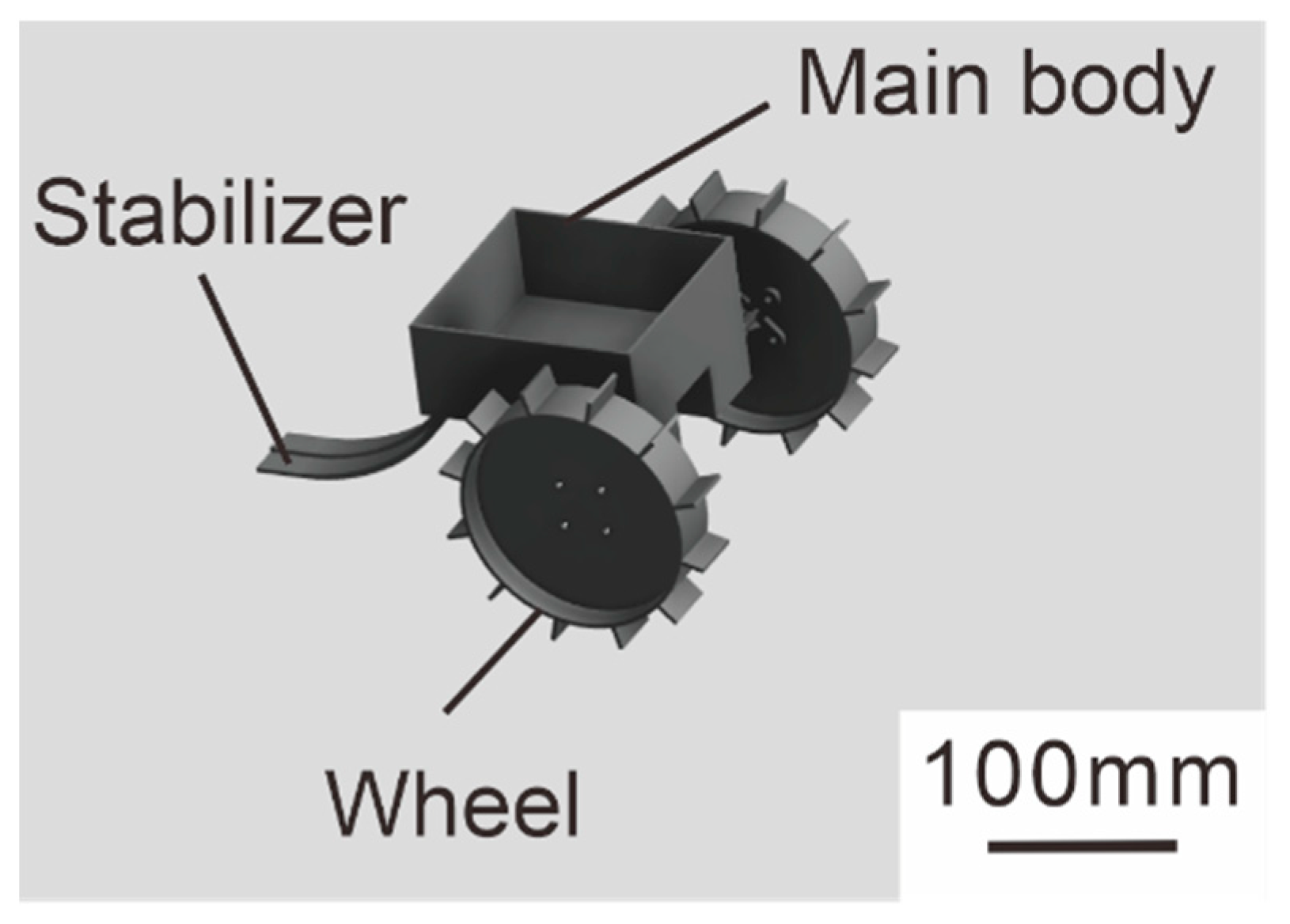
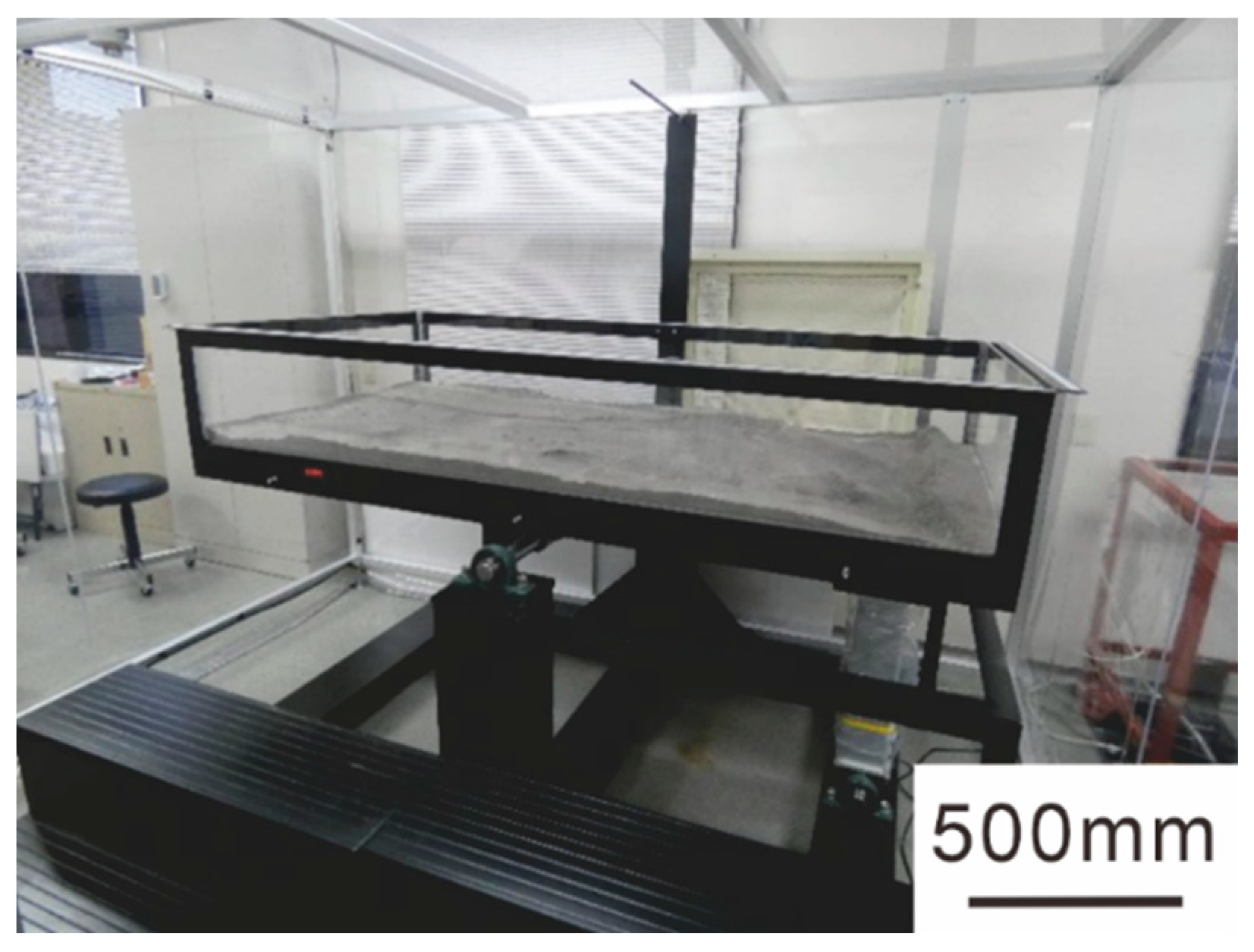
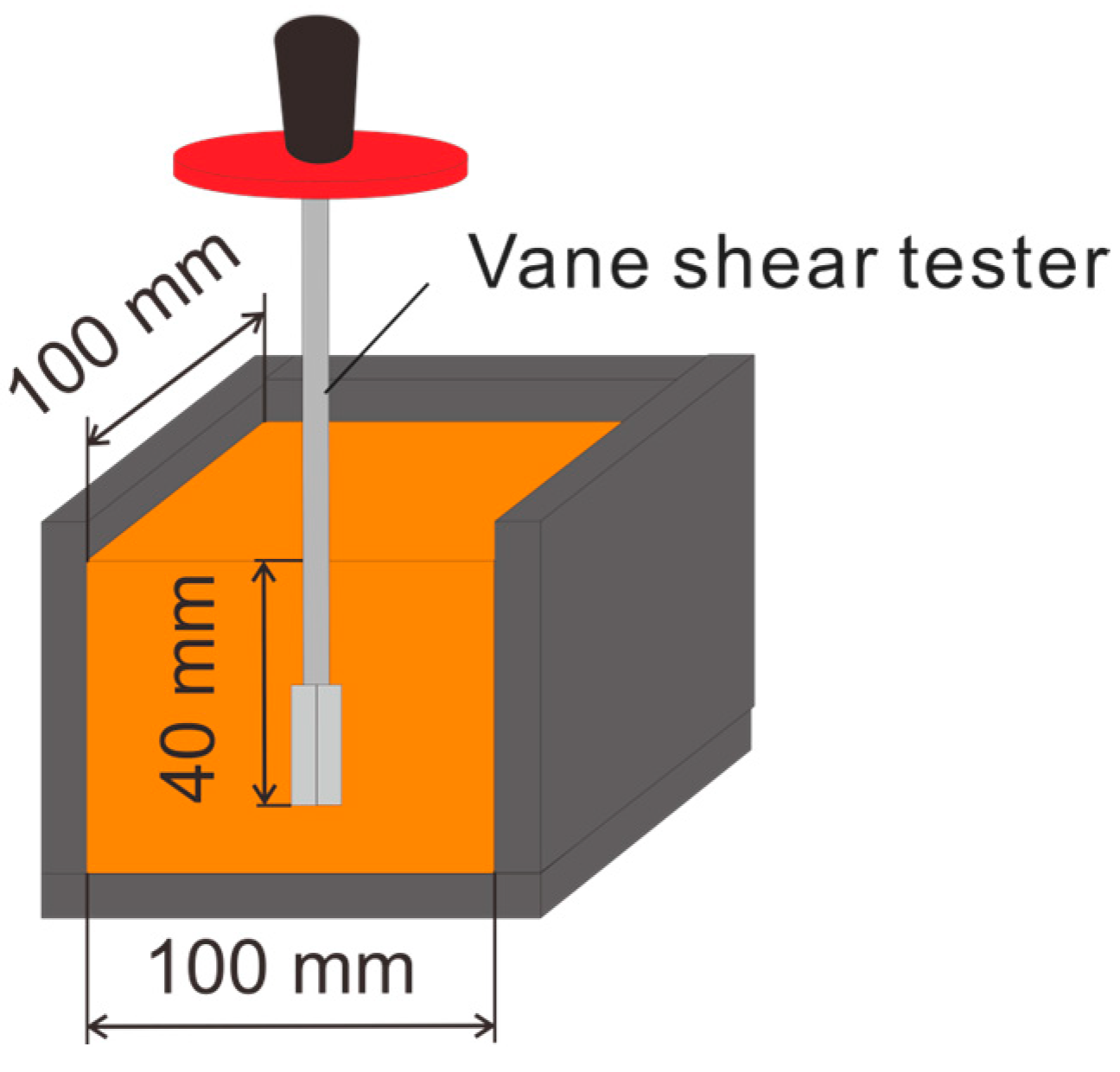
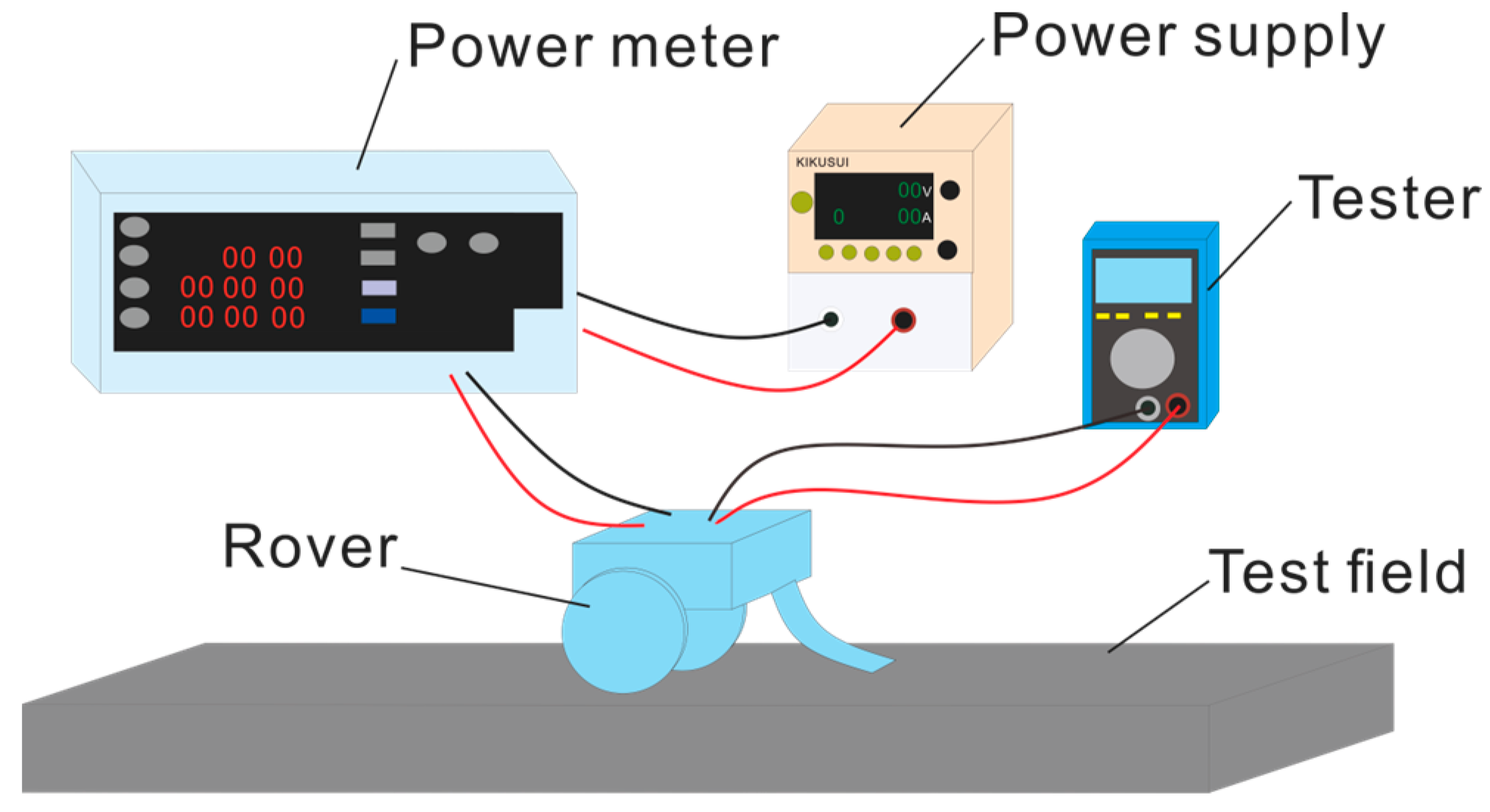



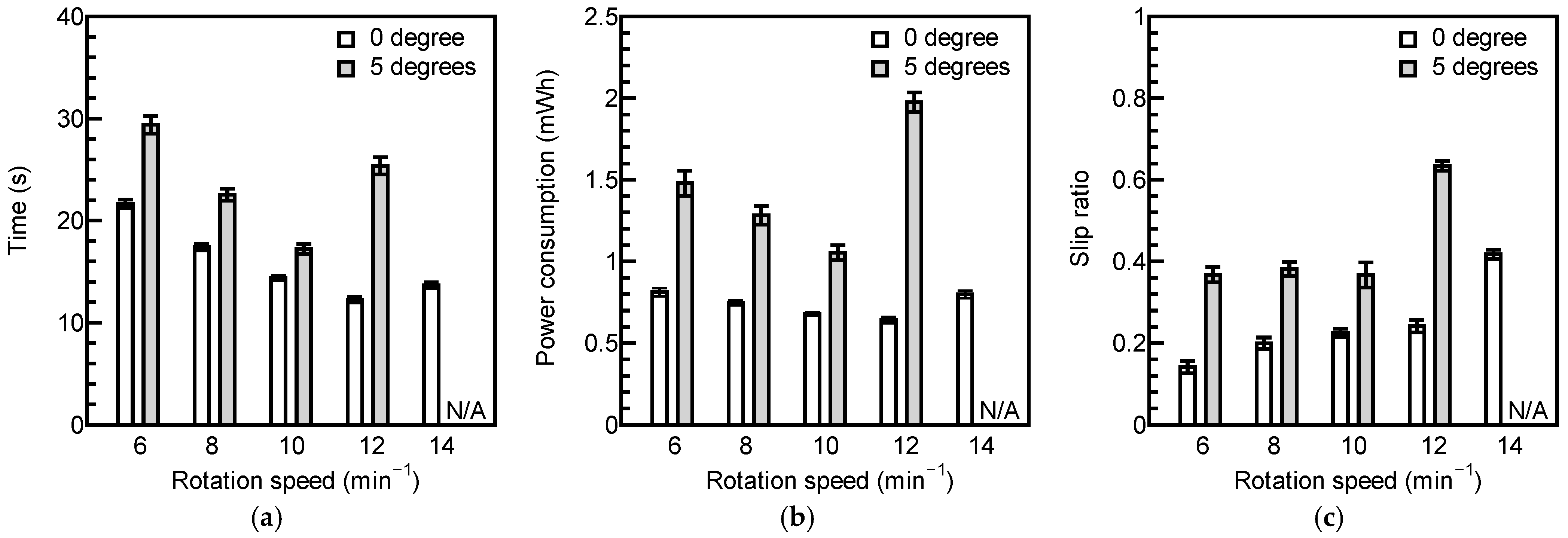
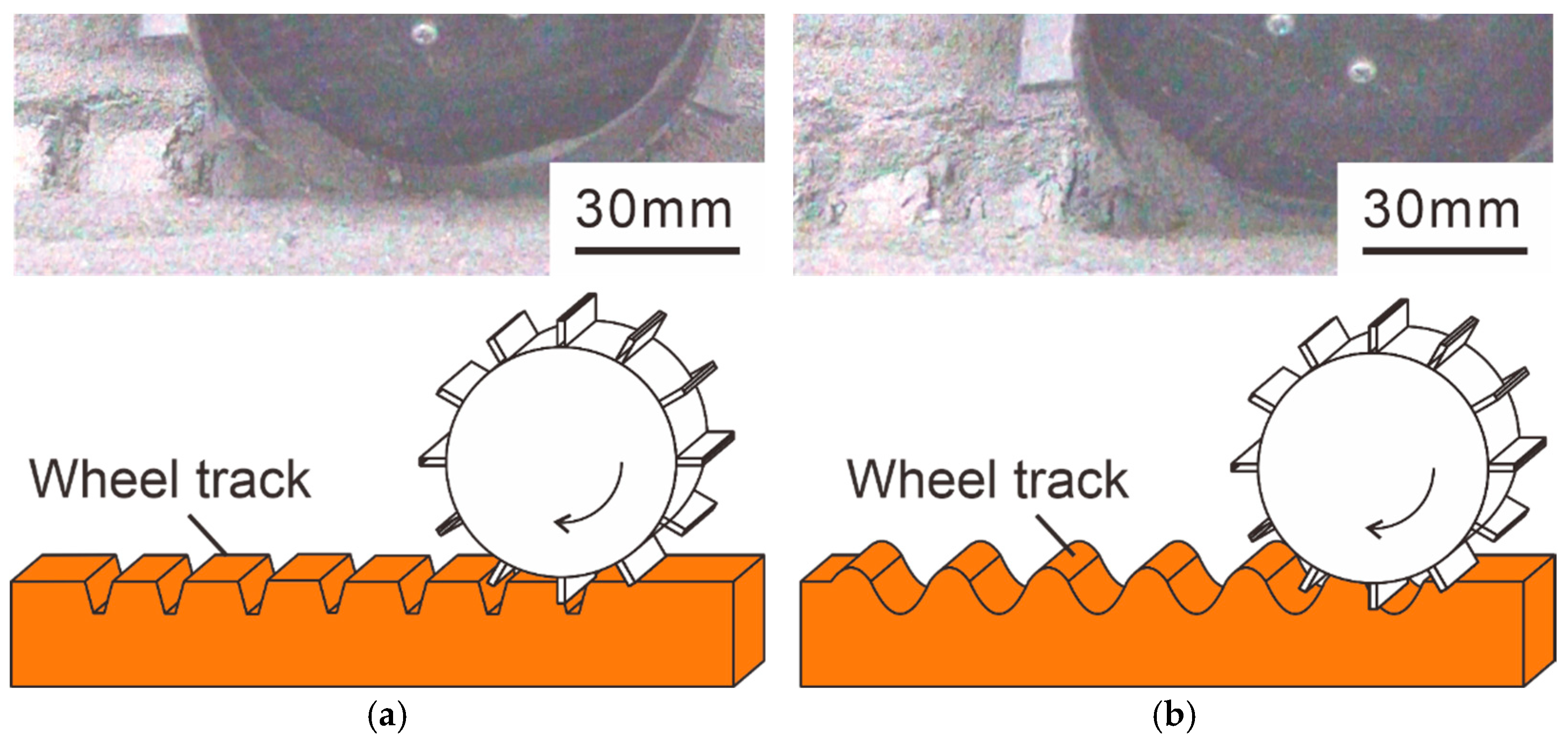

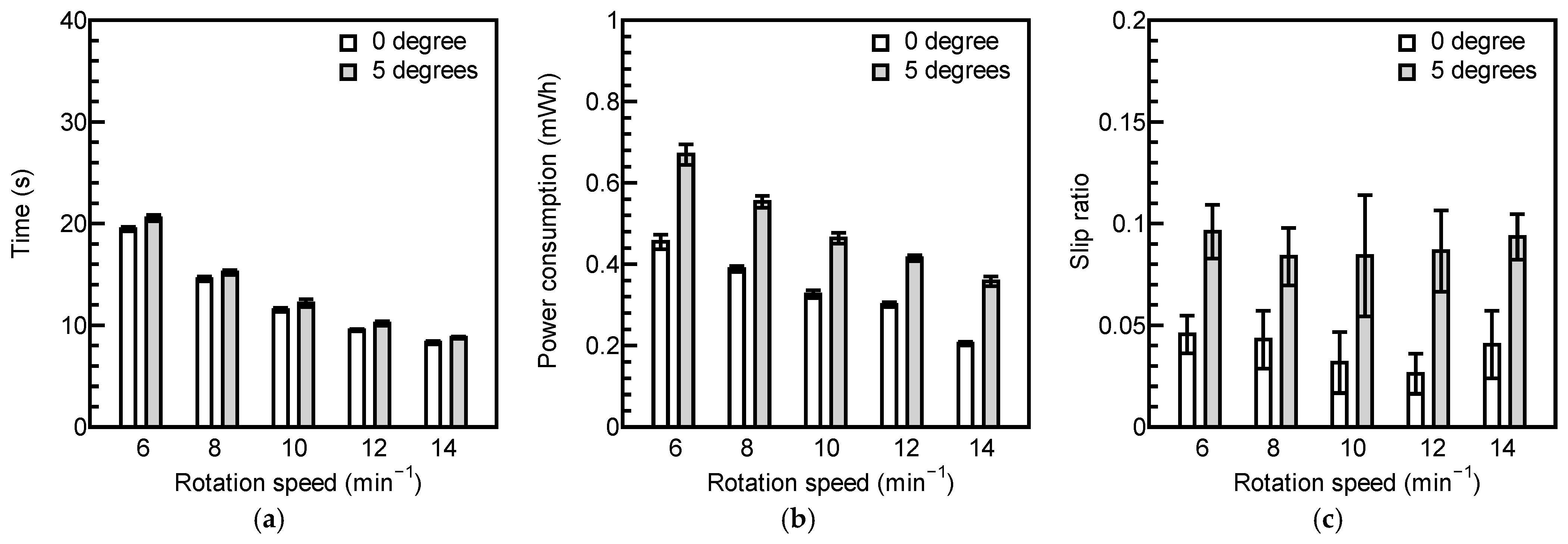
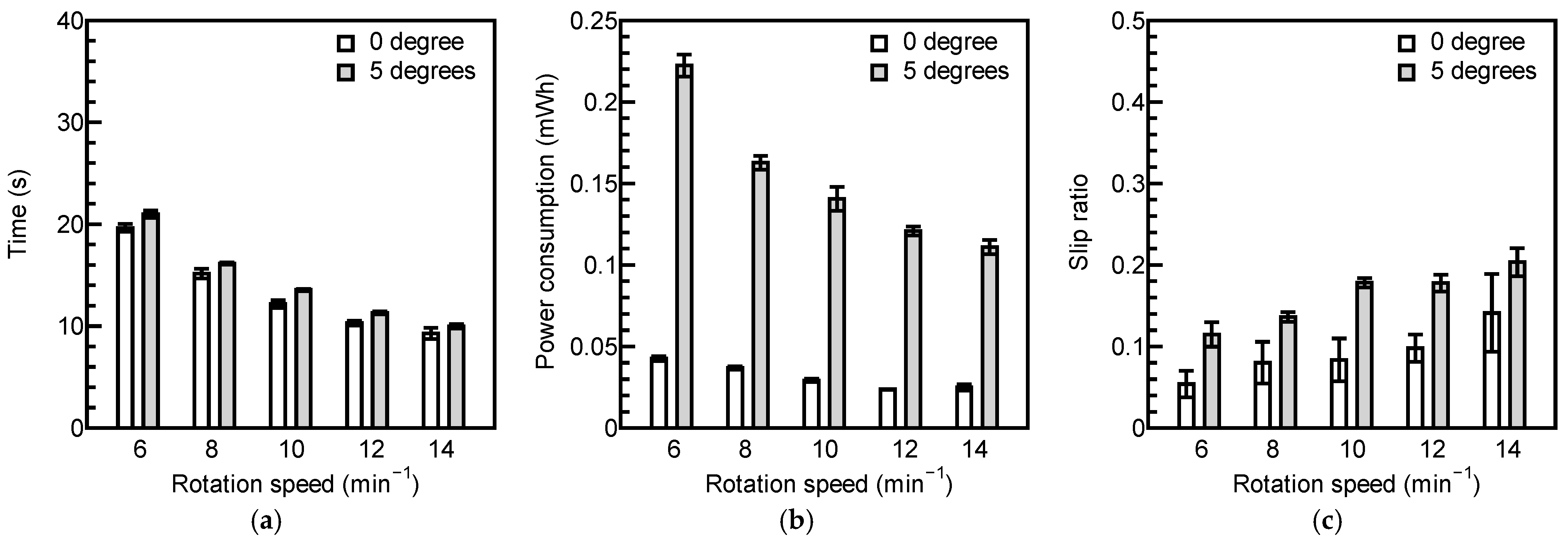

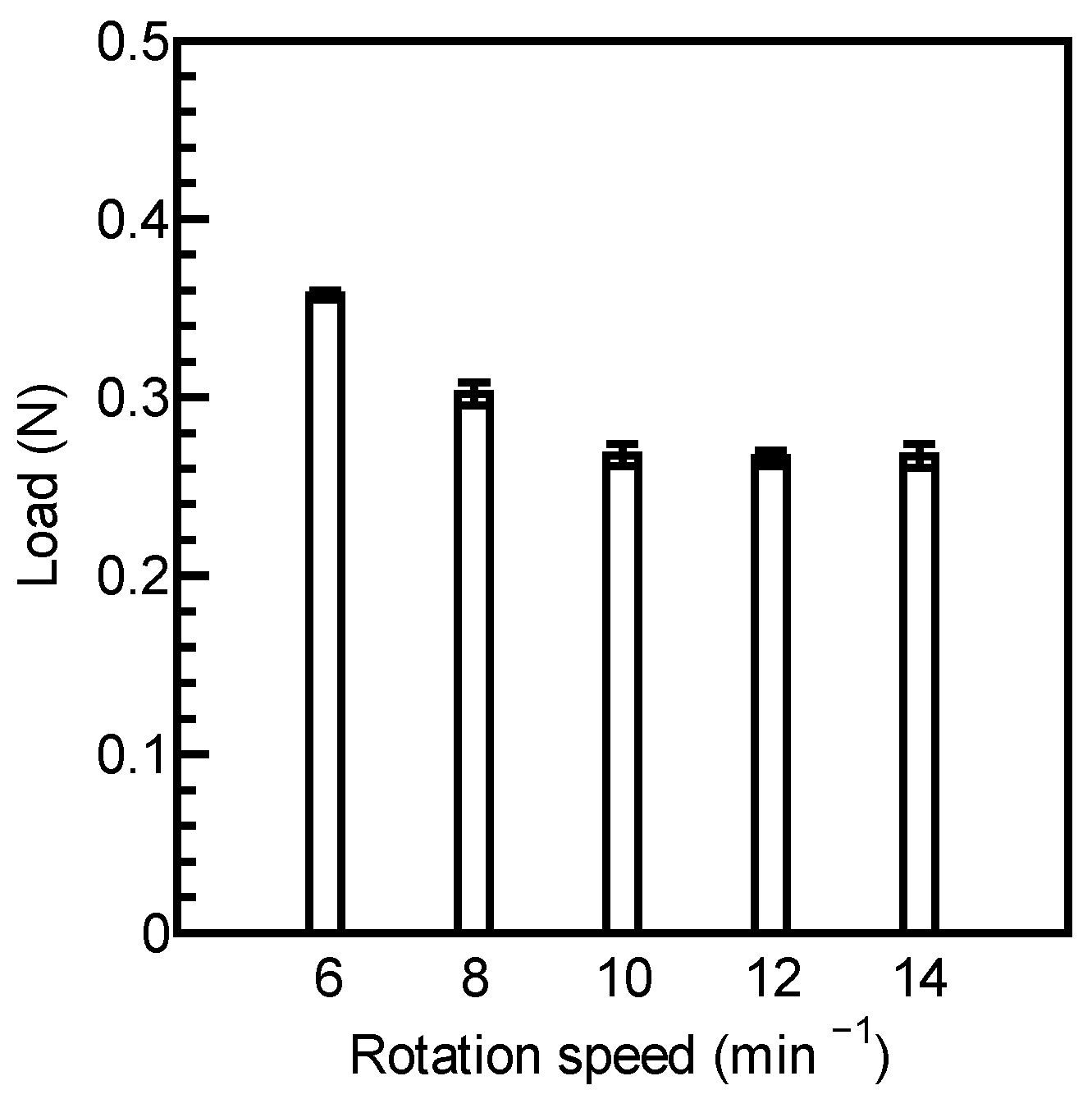
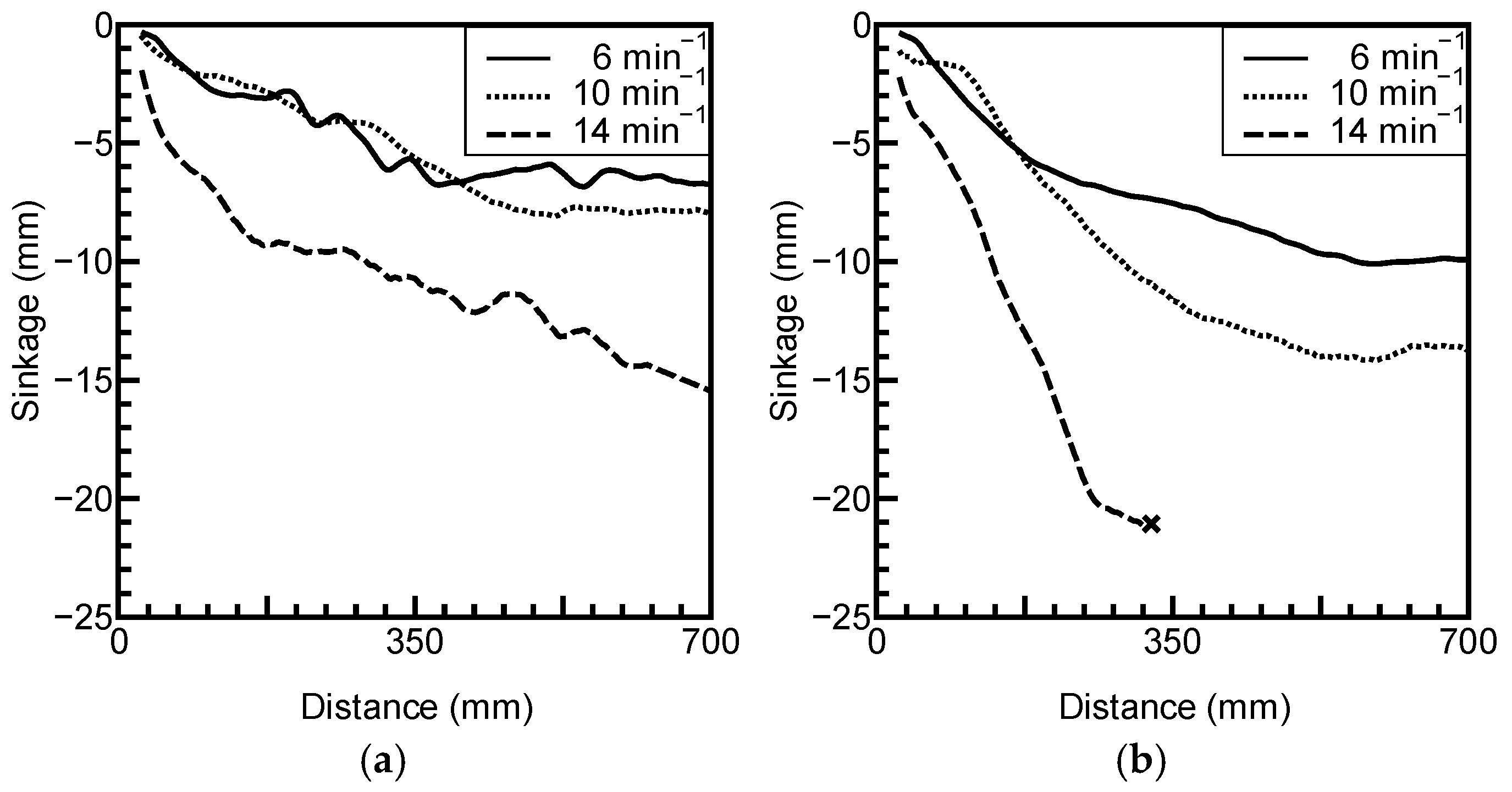
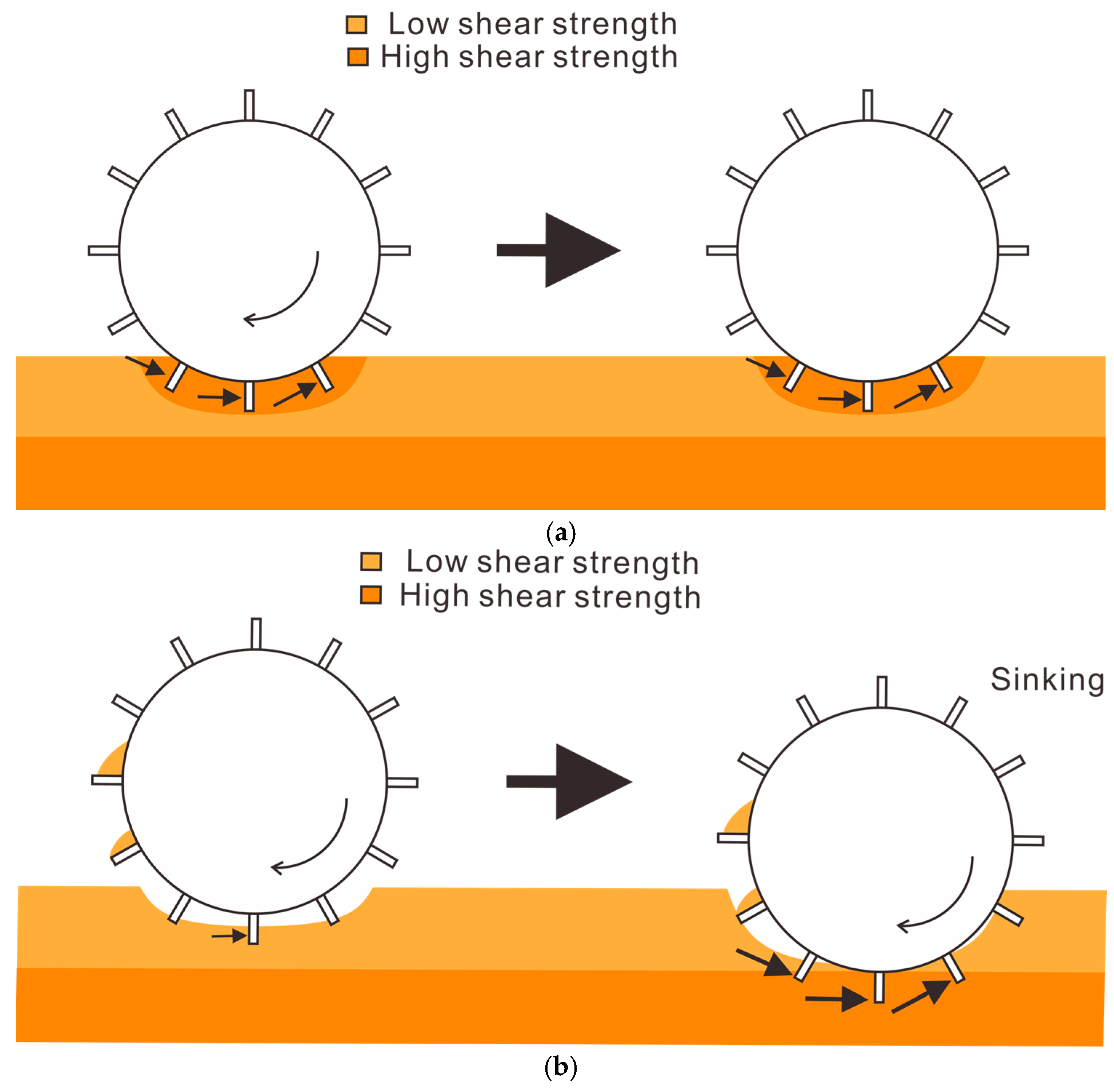

Disclaimer/Publisher’s Note: The statements, opinions and data contained in all publications are solely those of the individual author(s) and contributor(s) and not of MDPI and/or the editor(s). MDPI and/or the editor(s) disclaim responsibility for any injury to people or property resulting from any ideas, methods, instructions or products referred to in the content. |
© 2025 by the authors. Licensee MDPI, Basel, Switzerland. This article is an open access article distributed under the terms and conditions of the Creative Commons Attribution (CC BY) license (https://creativecommons.org/licenses/by/4.0/).
Share and Cite
Watanabe, K.; Otani, Y.; Tanaka, K. The Effects of Speed on the Running Performance of a Small Two-Wheeled Lunar Rover. Aerospace 2025, 12, 115. https://doi.org/10.3390/aerospace12020115
Watanabe K, Otani Y, Tanaka K. The Effects of Speed on the Running Performance of a Small Two-Wheeled Lunar Rover. Aerospace. 2025; 12(2):115. https://doi.org/10.3390/aerospace12020115
Chicago/Turabian StyleWatanabe, Kimitaka, Yamato Otani, and Kazuto Tanaka. 2025. "The Effects of Speed on the Running Performance of a Small Two-Wheeled Lunar Rover" Aerospace 12, no. 2: 115. https://doi.org/10.3390/aerospace12020115
APA StyleWatanabe, K., Otani, Y., & Tanaka, K. (2025). The Effects of Speed on the Running Performance of a Small Two-Wheeled Lunar Rover. Aerospace, 12(2), 115. https://doi.org/10.3390/aerospace12020115


_Zhu.png)



